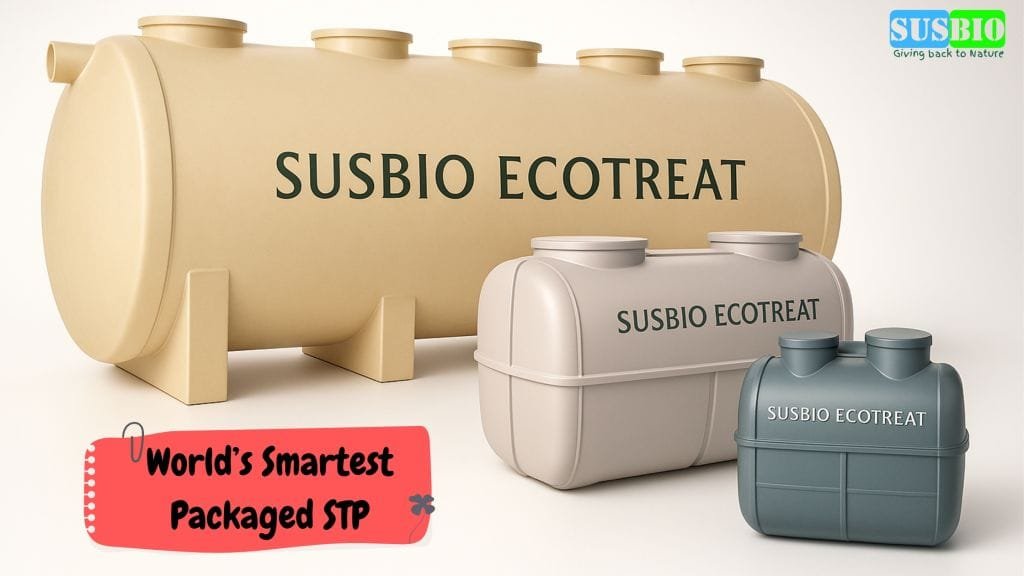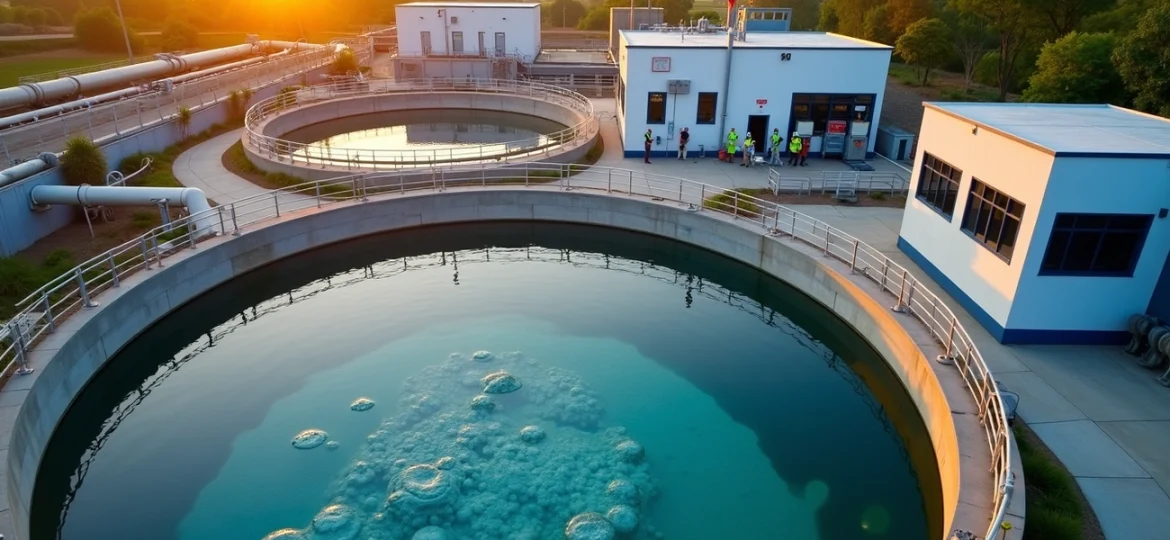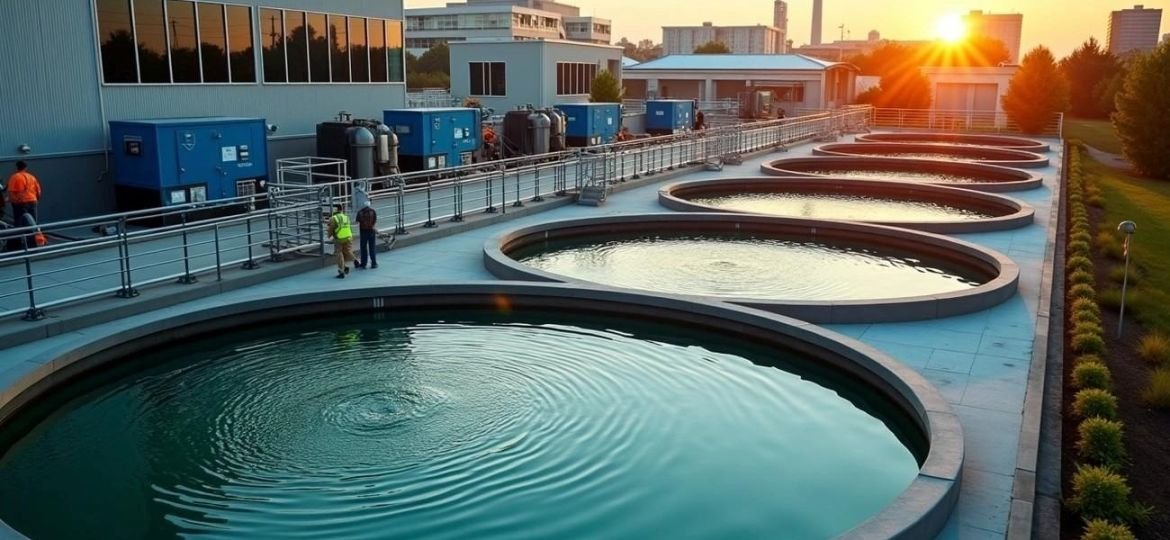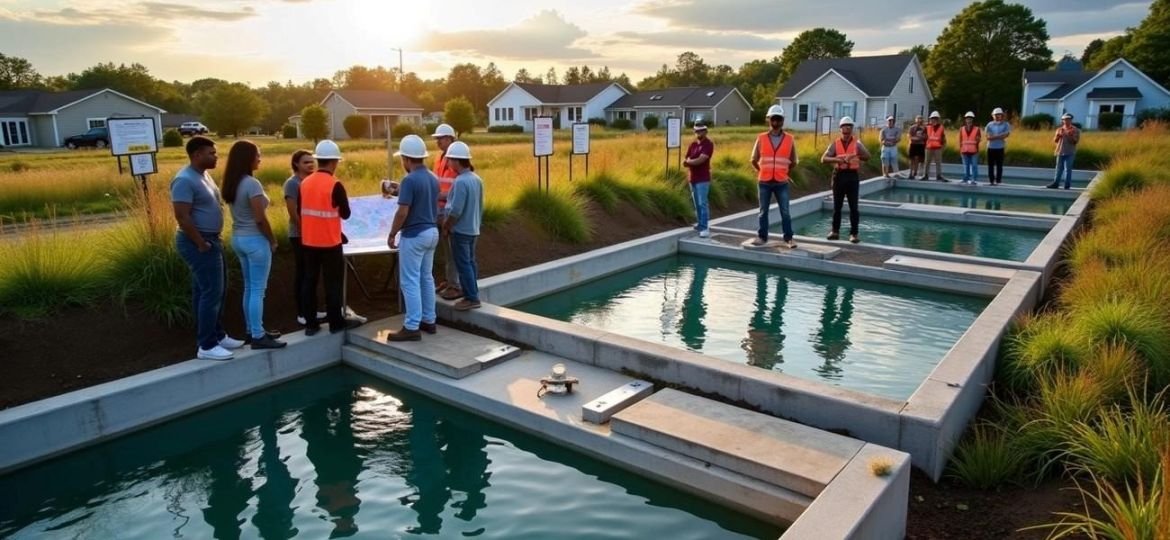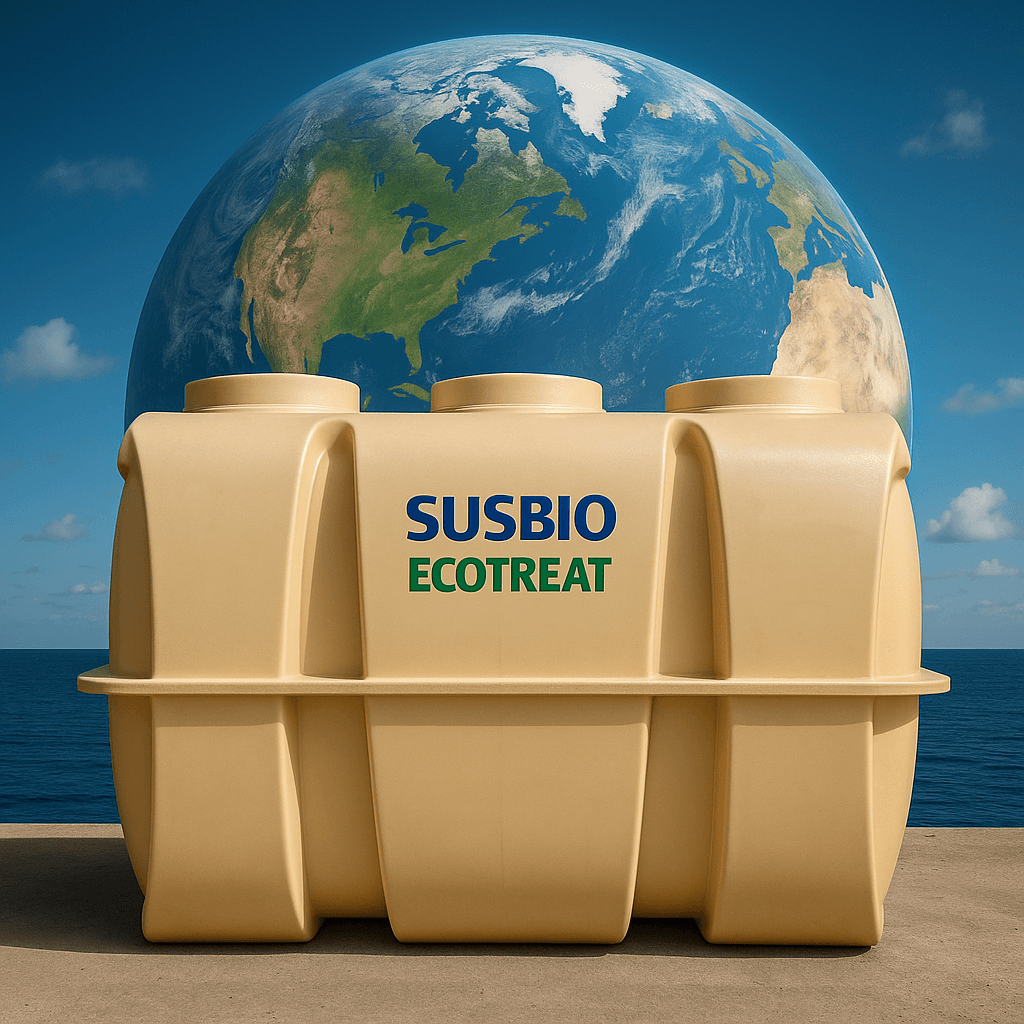India’s wastewater treatment systems face a massive challenge. The country generates over 61,000 million liters of wastewater daily. Only 30% gets proper treatment before flowing into rivers, lakes, or being reused. These numbers show we need advanced solutions as we move toward 2025 and beyond.
Population growth, climate change, and pollution threaten our access to clean water. Our planet will have nine billion people by 2050, which will increase pressure on water resources by a lot. The market reflects this growing crisis. The global water quality monitoring market should reach USD 9618.20 million by 2032, with a CAGR of 5.91%. The modular water and wastewater treatment market should reach USD 10.1 billion by 2030.
Traditional wastewater treatment technologies show clear limitations. Many treatment plants don’t deal very well with microorganic pollutants and release them into natural aquatic ecosystems. This piece will get into breakthrough membrane technologies, advanced oxidation methods, and nature-based solutions that change water and wastewater treatment. We’ll also look at trailblazing solutions like SUSBIO ECOTREAT, a modern solution in decentralized wastewater treatment systems. This strong technology protects the environment and serves as a national necessity for water security and sustainable development.
Limitations of Conventional Wastewater Treatment Systems
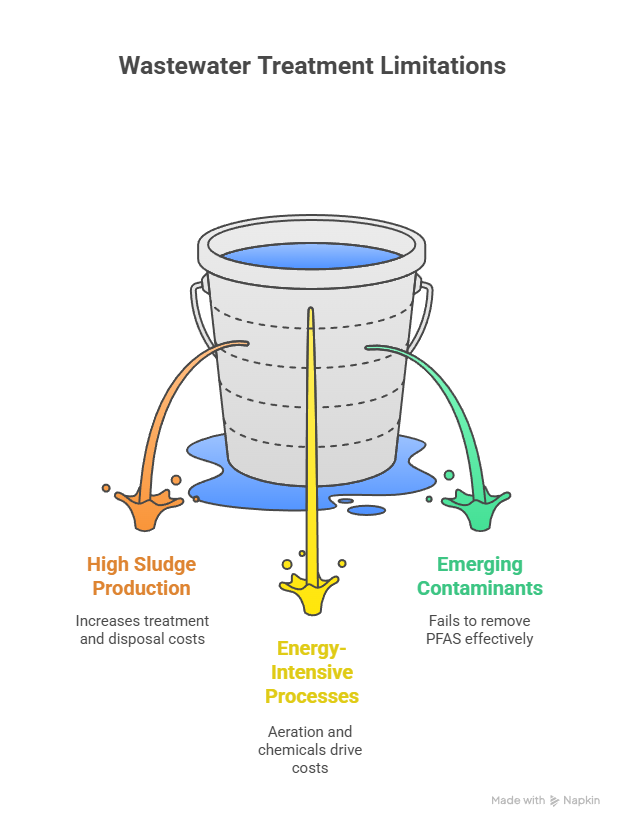
Traditional wastewater treatment systems don’t work very well in today’s fast-changing environment. These systems have several critical problems that modern solutions like SUSBIO ECOTREAT want to fix.
High sludge production in activated sludge processes
The activated sludge process creates too much sewage sludge, which contains water, organic materials, microorganisms, and various pollutants. This problem keeps getting bigger worldwide. China now produces over 50 million tons each year and sees a 10% yearly increase. EU projections showed an increase to 13 million tons by 2020. The treatment of excess sludge costs between 25-65% of total plant operation costs. Strict environmental laws have doubled sludge production and placed more restrictions on disposal options. Treatment facilities now face two major challenges because of these changes.
Energy-intensive aeration and chemical usage
Wastewater treatment plants use most of their energy for aeration. Electricity makes up more than 80% of total energy consumption. Daily electricity usage typically ranges from 6,660 kW·h/d to 31,020 kW·h/d, which creates a major operational bottleneck. These systems need even more energy during winter when lower temperatures slow down activated sludge activity. The plants also rely heavily on chemical additives for coagulation and flocculation processes, which drives up operational costs.
Inability to remove emerging contaminants like PFAS
The biggest concern is that conventional wastewater systems can’t handle emerging contaminants effectively. We used these methods to remove organic matter, suspended solids, and nutrients, but they don’t deal very well with pharmaceuticals, personal care products, microplastics, and heavy metals. PFAS compounds create special problems – these “forever chemicals” resist breaking down and pass through physical, chemical, and biological treatment stages almost unchanged. These limitations show why we need advanced solutions like SUSBIO ECOTREAT’s decentralized wastewater treatment systems. These systems offer innovative ways to manage sludge, save energy, and remove contaminants better.
Breakthrough Membrane Technologies for 2025
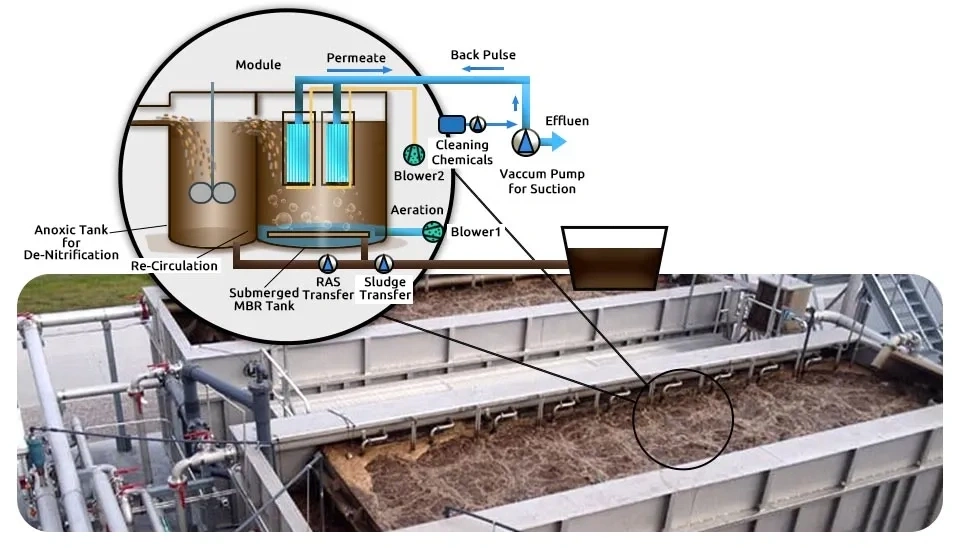
Membrane technologies are transforming wastewater treatment with breakthroughs that solve critical challenges in filtration, purification, and resource recovery. These innovative solutions will provide promising alternatives to conventional methods by 2025 and beyond.
Reverse Osmosis (RO) for high-salinity wastewater
RO technology leads the way in treating high-salinity wastewater and achieves removal efficiency up to 99.5% for bacteria and monovalent ions. This pressure-driven process reverses natural osmosis when hydrostatic pressure exceeds the osmotic pressure of the feed water. RO systems in North China Oilfield applications treated wastewater with salt concentrations of 4800-5500 mg/L. RO membranes need operating pressures between 6.8-7.2 MPa at temperatures around 30°C. This makes them energy-intensive but highly effective for desalination applications.
Nanofiltration (NF) for selective ion removal
NF bridges the gap between ultrafiltration and reverse osmosis. It operates at pressures of 10-50 bar with pore diameters between 0.5-2 nm. NF’s value comes from its selective ion removal capability that retains divalent ions while allowing monovalent ions to pass through. This selectivity helps NF achieve 90-98% rejection rates for divalent anions like magnesium sulfate while maintaining lower rejection (20-80%) for monovalent salts. NF also uses less energy and operates at lower pressure compared to RO systems.
Ultrafiltration (UF) in decentralized wastewater treatment systems
UF technology serves as an ideal solution for decentralized wastewater treatment and achieves up to 4-log reduction in pathogens and suspended solids. Self-sustained UF (SUF) marks a big advancement that operates at stable flux with ultra-low pressure (40-100 mbar) without backwashing or chemical cleaning. Remote and resource-limited areas benefit from this technology, where SUSBIO ECOTREAT can add biological treatment capabilities. UF systems need minimal chemicals and work efficiently.
Hybrid membrane bioreactors (MBRs) for compact urban setups
Hybrid MBRs combine biological processes with membrane filtration to create compact and efficient treatment solutions for urban environments. These systems blend conventional MBR technology with attached growth systems using moving bed (MBMBR) or fixed bed (FBMBR) configurations. This results in better nutrient and recalcitrant pollutant removal. MBMBR systems achieve by a lot higher nutrient removal efficiency (73.5%) compared to conventional MBR (62.5%). Dense urban areas can use anaerobic MBR combined with RO processes to produce high-grade reclaimed water for both non-potable and potable use.
Advanced Oxidation and Disinfection Methods
Advanced oxidation processes (AOPs) provide powerful solutions that eliminate persistent contaminants when conventional treatments don’t work well. These innovative methods create highly reactive species, particularly hydroxyl radicals, that break down pollutants and pathogens in wastewater.
UV/H2O2 and UV/Chlorine for micropollutant degradation
UV/H2O2 systems are a 30-year old AOP technology that removes micropollutants through hydrogen peroxide’s photodecomposition. This method achieves impressive degradation rates with average removal rates of 64-74% for multiple contaminants. UV/Chlorine technology has become an economical solution that needs nowhere near as much energy to degrade stubborn contaminants. Both systems create hydroxyl radicals, and UV/Chlorine adds reactive chlorine species that target electron-rich compounds. The best choice between these systems depends on specific contaminants and operating conditions.
Electrochemical oxidation for pharmaceutical removal
Electrochemical oxidation offers an environmentally friendly solution that eliminates the need for chemical transport and storage. The method creates oxidants directly through electrode surface reactions and provides quick response times with simple operations. Modern systems remove 70% to 100% of pharmaceuticals like atorvastatin, but the process uses lots of energy and works less well in complex wastewater. SUSBIO ECOTREAT makes use of this technology in its decentralized systems that run on solar power in remote areas.
Integration of AOPs with biological treatment systems
AOPs combined with biological processes create cooperative effects that boost overall treatment success. The process breaks complex compounds into simpler, biodegradable forms that microorganisms easily consume during biological treatment. This combined approach creates less excess sludge while targeting persistent pollutants. Treatment facilities achieve better compliance with environmental standards consistently. SUSBIO ECOTREAT’s modular bio-based systems are perfect platforms to apply these combined approaches in decentralized settings.
Nature-Based and Modular Wastewater Treatment Solutions
Nature-based solutions are becoming popular as eco-friendly alternatives to traditional wastewater treatment. These solutions benefit the environment and work well in many applications.
Constructed wetlands for rural and peri-urban areas
Constructed wetlands copy natural wetland processes through engineered systems that use wetland hydrology, soils, microbes, and plants to treat wastewater. These systems come in several forms. Surface flow (SF) wetlands have open water areas with floating and emergent plants. Horizontal subsurface flow (HSSF) wetlands clean water through porous media planted with vegetation. Vertical subsurface flow (VSSF) wetlands filter water through layers using intermittent flooding. Hybrid systems that combine VSSF and HSSF in series work better, especially at removing nitrogen. These wetlands do more than just treat water – they create habitats, store water, and look beautiful.
Phycoremediation using algae for nutrient removal
Phycoremediation uses algae to clean wastewater and creates valuable biomass. Mixed cultures of Chlorella sorokiniana, Coelastrella sp. and Acutodesmus nygaardii have showed amazing results – 100% phosphorus, 92% COD, and 90% ammonia reduction. The process cleans pollutants through biosorption, bioconcentration, and biotransformation. Spirulina sp., Chlorella sp., and Scenedesmus sp. are commonly used species. The algal biomass can become biofuels, fertilizers, or other valuable products, following circular economy principles.
SUSBIO ECOTREAT: Modular bio-based treatment for decentralized systems
SUSBIO ECOTREAT is an advanced prefabricated sewage treatment solution made from durable fiber-reinforced plastic. The system combines anaerobic and aerobic methods in its dual-treatment process to deliver excellent wastewater purification with minimal oversight. The benefits are impressive: 90% energy efficiency, strong construction, automated operation without staff, and adaptable modular design. This ready-to-use solution needs no extensive construction on-site and provides tertiary wastewater treatment.
Containerized systems for emergency and remote deployment
Containerized treatment plants are ready-to-install solutions in standard shipping containers. The ClearFox® Containerized System is a great example – it treats wastewater from 50 to 20,000 people (7.5 to 3000 m³ daily) and needs minimal setup. These systems come pre-assembled and factory-tested. You just need to connect the inlet, outlet, and power. Their modular design makes scaling easy and expansion affordable as needs change. They work perfectly in remote locations or emergencies where quick setup matters.
Conclusion
The global water crisis demands dramatic changes in wastewater treatment systems by 2025. India’s situation highlights this urgency – only 30% of its daily 61,000 million liters of wastewater gets proper treatment. Traditional systems worked well for decades. Their drawbacks now include too much sludge production, high energy use, and poor performance against new contaminants. These issues need ground-breaking solutions.
Membrane technologies form the foundation of modern treatment solutions. Reverse osmosis systems remove 99.5% of salt from high-salinity waters. Nanofiltration selectively removes ions while using less energy. Ultrafiltration works great in smaller setups, especially when you have biological treatment methods. These technologies adapt well to challenges of all types.
Advanced oxidation makes it possible to break down stubborn pollutants through powerful degradation. UV/H2O2 systems remove 64-74% of pharmaceuticals. Electrochemical oxidation offers a green alternative that doesn’t need chemical transport. These methods blend with biological treatments to improve the overall cleaning process substantially.
Nature-based solutions are also green alternatives that do more than clean water. Rural areas benefit from constructed wetlands that create valuable wildlife homes. Algae-based cleaning removes nutrients and creates biomass for biofuels and other products. This approach fits perfectly with circular economy principles.
SUSBIO ECOTREAT stands out as a detailed solution to many challenges. This modular bio-based system combines anaerobic and aerobic treatments. It delivers superior cleaning with 90% energy efficiency and needs minimal human oversight. The plug-and-play design needs no extensive construction but still enables tertiary treatment. This system shows how practical, adaptable solutions can help our water-stressed future.
Water shortages will make these advanced technologies more common. Markets for water quality monitoring and modular treatment continue to grow. Challenges exist with cost and setup in developing regions. The solutions we took a closer look at in this piece show promising ways to achieve water security. Future wastewater treatment will combine these approaches into flexible systems. These systems will protect public health and the environment while turning waste into valuable resources.
Key Takeaways
Advanced wastewater treatment technologies are revolutionizing water management as we face a global crisis where only 30% of wastewater receives proper treatment, demanding immediate innovation for sustainable water security.
- Membrane technologies lead the breakthrough: RO achieves 99.5% contaminant removal, while hybrid MBRs offer compact urban solutions with 73.5% nutrient removal efficiency.
- Advanced oxidation eliminates persistent pollutants: UV/H2O2 and electrochemical methods effectively degrade pharmaceuticals and emerging contaminants that conventional systems cannot handle.
- Nature-based solutions provide sustainable alternatives: Constructed wetlands and algae-based phycoremediation offer energy-efficient treatment while creating valuable byproducts and habitats.
- Modular systems enable rapid deployment: Technologies like SUSBIO ECOTREAT deliver 90% energy efficiency with plug-and-play installation for decentralized applications.
- Integration maximizes treatment effectiveness: Combining biological processes with advanced oxidation creates synergistic effects that significantly improve overall pollutant removal rates.
The convergence of these technologies represents a paradigm shift toward decentralized, energy-efficient, and environmentally sustainable wastewater treatment that can address both current challenges and future water security needs.
Frequently Asked Questions
Q1. What are the main challenges facing conventional wastewater treatment systems?
Conventional systems struggle with high sludge production, energy-intensive processes, and inability to remove emerging contaminants like PFAS. These limitations highlight the need for advanced solutions that address sludge management, energy efficiency, and contaminant removal.
Q2. How do membrane technologies improve wastewater treatment?
Membrane technologies like reverse osmosis, nanofiltration, and ultrafiltration offer superior contaminant removal, selective ion removal, and compact treatment solutions. They can achieve up to 99.5% removal efficiency for bacteria and ions, making them highly effective for various wastewater challenges.
Q3. What are advanced oxidation processes (AOPs) and how do they benefit wastewater treatment?
AOPs are innovative methods that generate highly reactive species to break down persistent pollutants and pathogens. Technologies like UV/H2O2 and electrochemical oxidation can effectively remove pharmaceuticals and other emerging contaminants that conventional treatments fail to address.
Q4. How do nature-based solutions contribute to sustainable wastewater treatment?
Nature-based solutions like constructed wetlands and phycoremediation using algae offer sustainable alternatives to traditional treatment methods. They provide effective nutrient removal, create valuable habitats, and align with circular economy principles by generating useful byproducts.
Q5. What advantages do modular wastewater treatment systems offer?
Modular systems like SUSBIO ECOTREAT provide plug-and-play solutions that are energy-efficient, require minimal human intervention, and can be rapidly deployed. They offer flexibility for various project needs and are particularly suitable for decentralized applications and remote locations.


